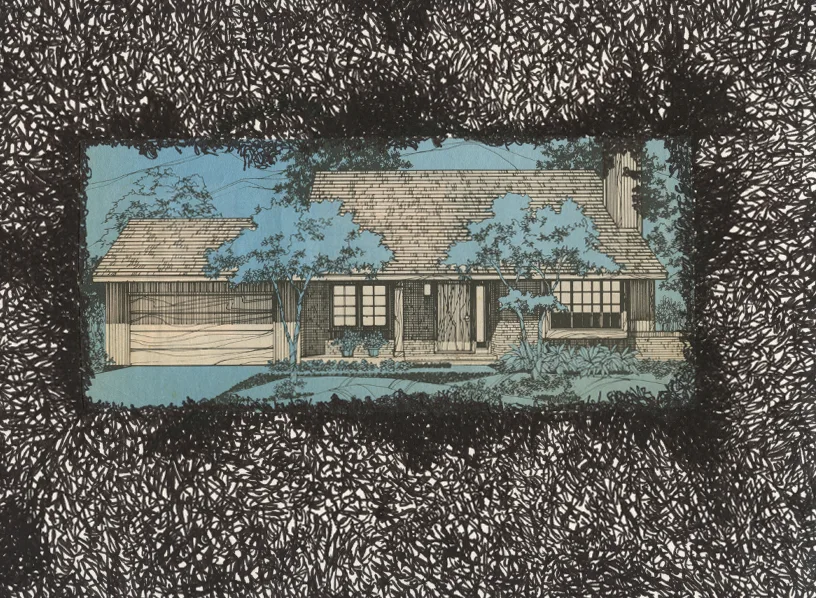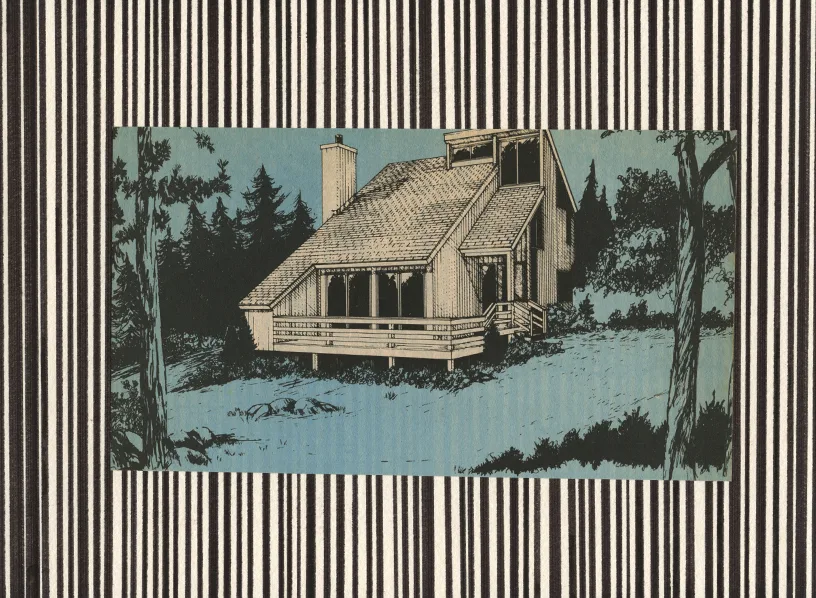
Ten years ago Mexican artist Pilar Córdoba Longar bought a DIY cross-stitch kit with a pattern of a wolf’s face. Soon she got tired of following the instructions, so she went off course by changing the colors of the thread and left it unfinished. It became her first embroidered artwork.
Pilar’s pieces explore the natural world, from the roots of a plant to the jagged peaks of a mountain range to the softness of the human body. Her mother being a biologist, she grew up poring over nature books and had a subscription to a monthly science magazine for kids called Chispa.
“I was a precocious reader,” she says. “I devoured Archie comics and read Latin American authors. I loved diving into encyclopedias and dictionaries just to learn new words or to look at images.”

Pilar’s subject matter does not only stem from books, she also bases them on real-life experiences. For example, the cross-stitched mountains are inspired by the vistas she’d see from the car window on family trips from Mexico City to Texas.
“My idea of intimacy was closely linked to those views. I dreamed of living with a lover in the mountains far from civilization,” she says. “The mountains still seem the most powerful natural element to me: supreme, unattainable, and difficult to get close to. I still find their seclusion super romantic.”



Now, whenever she’s traveling to a new place she heads to stationery stores, second-hand markets and yarn shops. “I like to mix all my resources,” she says. “I can do an embroidered piece on fabric from Japan, with German thread, based on a Mexican illustration book from the 1950s.”
When it’s not mountains, she stitches human features, like eyes looking at you or hands gesturing. “Representation of the human body has the capacity to transmit feelings,” she says. “Hands in a certain position can show joy or sadness, eyes can talk about a departure. I appropriate body parts to show my deepest fears, pleasures, disappointments, and ecstasies.”

She works from a home studio with high ceilings and enormous windows. “My little cave of light,” she calls it. “It feels like a giant terrarium.” There, she traces or scans her chosen image then tweaks it in Photoshop before converting it into a cross-stitch pattern of tiny squares. They are the original pixels of the images. “The rest is just sitting down, being very patient, and finishing it.”
Yet, despite the slow and demanding work, Pilar doesn’t believe in outsourcing her crafting process. She thinks it’s vital to her practice, and the repetitive motion puts her in a meditative state.


“It’s an introspective and tactile quest,” she says. “The whole point is to raise a dialogue with the sources and materials and to begin a personal transformation through my hands. These days everything is automatic, so manual work adds validity to my work. It refers to a process, to time, to permanence.
“I feel proud to say that a piece has taken x months to make because it shows that I went from one place to another while producing it; it marks my own resilience.”
There’s little room for error with cross-stitch embroidery; a stitch out of place could throw the whole design but it could also provide a welcome surprise. “You kind of know how it will end up looking, but you can’t be certain until you cross the last stitch.”